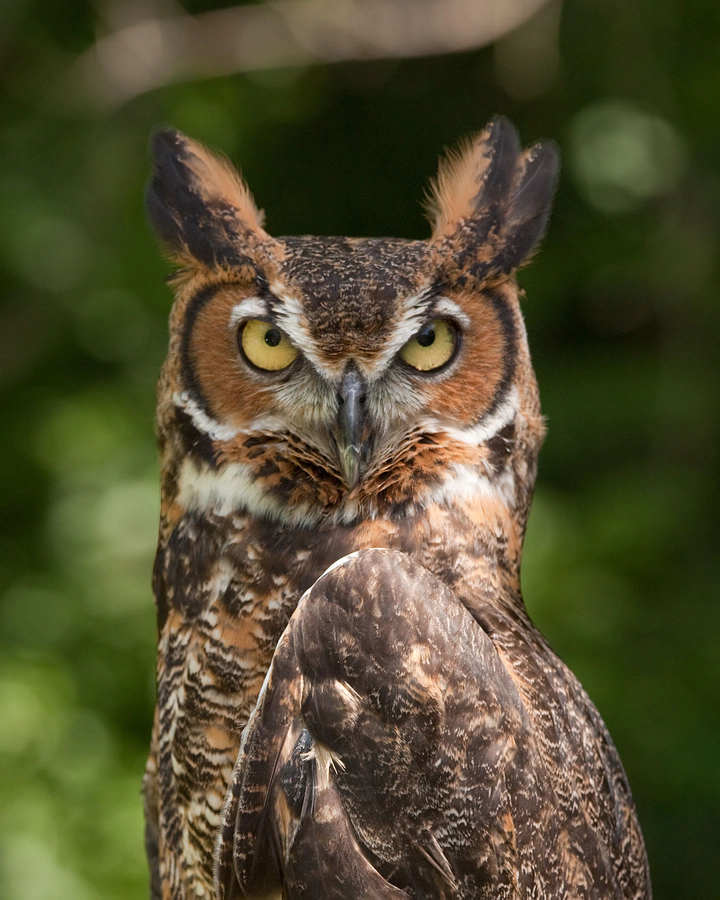Great Horned Owl genome

Background
The origins and inner workings of life on Earth have always captivated humanity. Today, we live in a new world of biological discovery and advancement fueled by increasingly sophisticated and affordable DNA sequencing technology. With the ability to cheaply and accurately sequence the DNA of any living organism comes the ability to shine a direct light on the underpinnings of all biological life. Despite recent advances in DNA sequences, the assembly of animal genomes still requires a non-trivial amount of funding and computational effort. The investment of these resources returns dividends with respect to biological insight. Genomes enable scientific research centered around evolutionary biology and population genomics. Recent research expeditions such as the Vertebrate Genomes Project and the Genome10K project (Koepfli 2015) have issued a call for the research community to unite in the push towards the goal of sequencing DNA for all living species. For the project detailed in this proposal, we plan to add a new species, the great horned owl Bubo virginianus, to the growing list of organisms with sequenced genomes. With this new DNA sequence data available, novel insights will be possible in all facets of great horned owl biology, both past and present, and including potential insights to their ability to serve as a new beacon for Owl research.
The great horned owl is the Rice University mascot, and Rice university has a long history with the imagery of this species. We believe that selecting this species for a capstone project in particular will lead to many opportunities to raise public awareness and get the greater Houston community excited about computational biology research, DNA sequencing, and uncovering biological insights specific to the genus Bubo. We foresee many opportunities for positive publicity for all parties involved in the study, including the Rice Undergraduate community, D2K and the Houston Zoo. This project will include visits to the Houston Zoo to see Great Horned Owls and collaborate with the Houston Zoo on the scientific publication. We hope this project can also serve as a flagship for the positive benefits of interdisciplinary and cross-institutional research efforts.
The primary aim of this project is to assemble a reference genome for the great horned owl Bubo virginianus. Upon completion of this primary aim, our secondary aim will be an exploratory data analysis. With accurate whole genome data available for the first time, we plan to see what new insights can be gained into the evolutionary history of this owl species. Possible insights include placing the great horned owl on the avian tree of life (Jarvis 2014), investigating the effective population size history of horned owls, searching for evidence of past interspecific gene flow, and even the possibility of aiding any conservation efforts that may arise in the future.
Collaborators
- Dr. Fritz Sedlazeck (BCM HGSC)
- Dr. Genevera Allen (D2K)
- Dr. Huw Ogilvie (Rice CS)
- Tara Cornelius (Houston Zoo)
- Peter Riger (Houston Zoo)
Sequencing data
- PacBio HiFi DNA sequencing, 60-80X coverage
- PacBio HiFi RNA sequencing, 20-30X coverage
References
- Koepfli, Klaus-Peter, Benedict Paten, Genome 10K Community of Scientists, and Stephen J. O’Brien. “The Genome 10K Project: a way forward.” Annu. Rev. Anim. Biosci. 3, no. 1 (2015): 57-111.
- Formenti, Giulio, Matteo Chiara, Lucy Poveda, Kees-Jan Francoijs, Andrea Bonisoli-Alquati, Luca Canova, Luca Gianfranceschi, David Stephen Horner, and Nicola Saino. “SMRT long reads and Direct Label and Stain optical maps allow the generation of a high-quality genome assembly for the European barn swallow (Hirundo rustica rustica).” GigaScience (2018).
- Hanna, Zachary R., James B. Henderson, Jeffrey D. Wall, Christopher A. Emerling, Jérôme Fuchs, Charles Runckel, David P. Mindell, Rauri CK Bowie, Joseph L. DeRisi, and John P. Dumbacher. “Northern spotted owl (Strix occidentalis caurina) genome: divergence with the barred owl (Strix varia) and characterization of light-associated genes.” Genome biology and evolution 9, no. 10 (2017): 2522-2545.